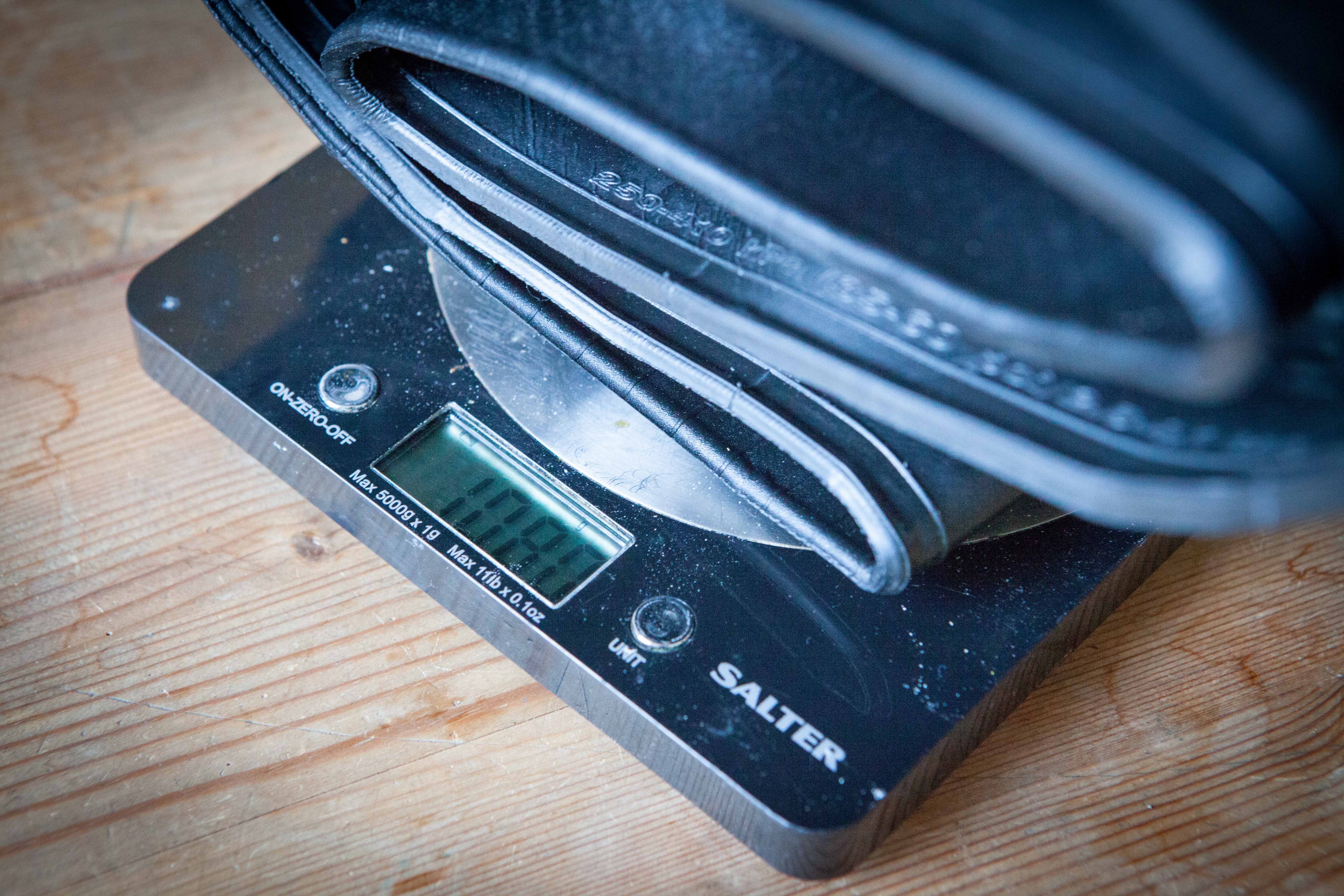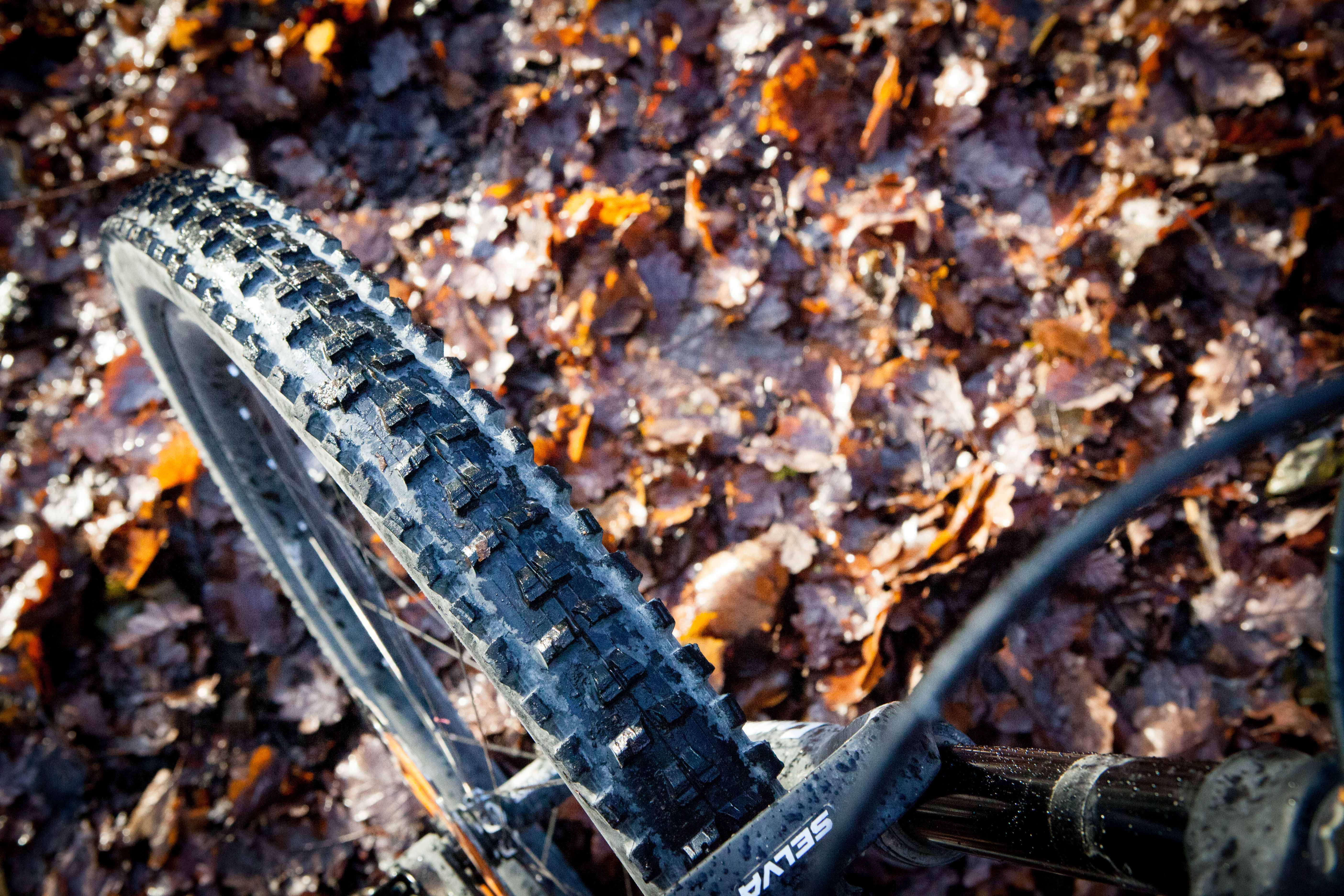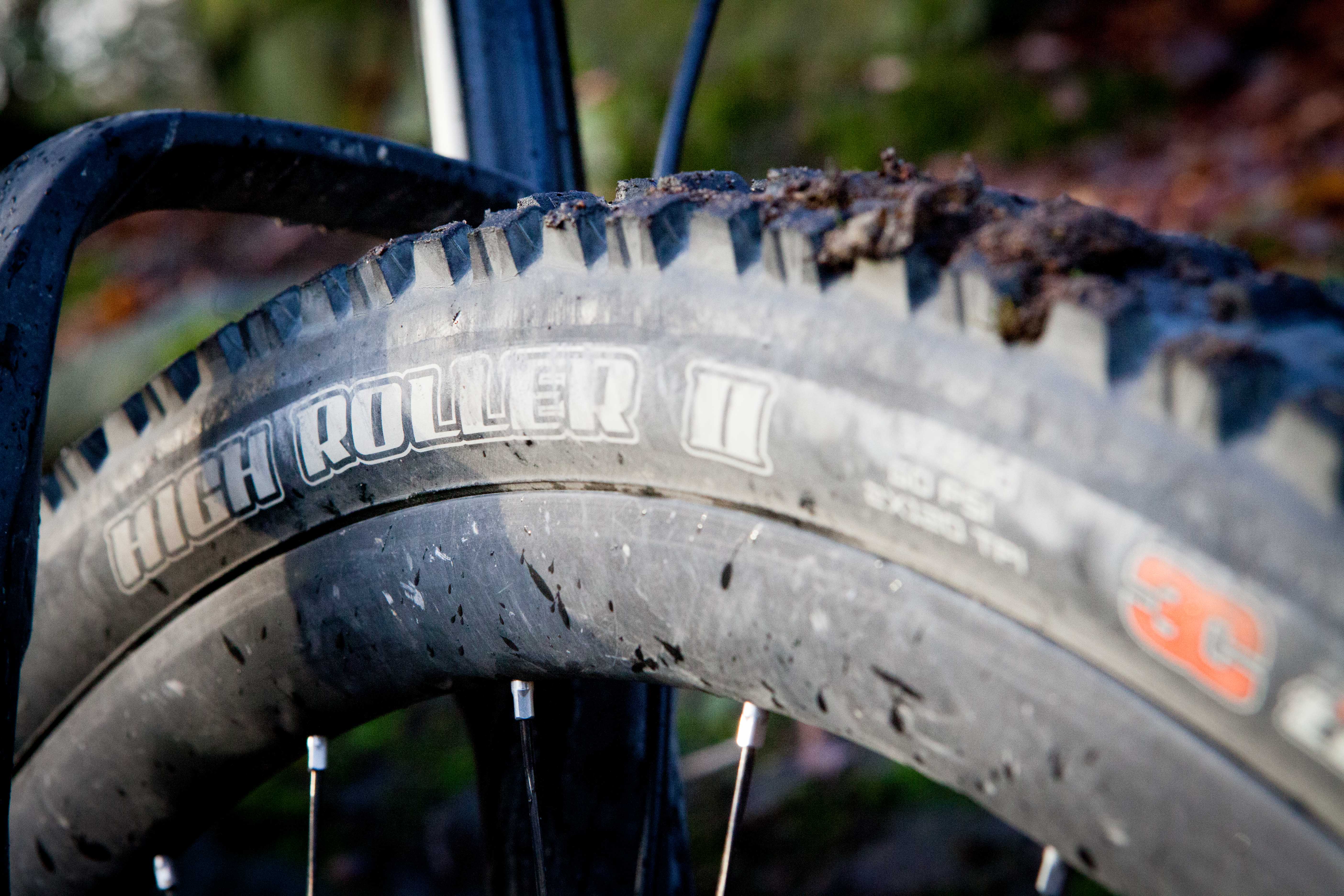Reviewing tyres is a bit of a daunting task. Although those innocuous-looking black hoops of rubber look a bit boring without the same “fiddle factor” of suspension forks or a dropper post, they are your bike’s (and therefore your) only contact with the ground, and are very important things. However, one person’s ‘efficient and fast-rolling’ trail slayer is another’s slithery death tyre that pinches at the mere sight of a rock, so it can be hard to call. Even more frustratingly, despite everything above, I can’t think of a single bike component that has quite the same impact on ride quality as a damn tyre. It is no overstatement to say that I’ve hated bikes on the basis of the rubber they were shod with, and come close to giving up on them, only for them to be redeemed by a simple re-shodding.

Now that I’ve got that off my chest, I’d like to thank the two readers who are persisting and actually continuing to read this review to the end. It’s worth it, I promise. You see, the Maxxis High Roller II 3C Maxx Terra, TR, DD is a really good tyre. A really, really good tyre. Here’s why.
Specification
The High Roller II is an evolution of one of their all time classics, no prizes for guessing the original version’s name. It won fans thanks to a good balance between grip and lack of drag. The High Roller II continues this tradition with toothy side knobbles, and a slightly less aggressive mid-tread. According to Maxxis’ website, there are 19 versions of the tyre available, across three wheel sizes and three widths and various compounds and sidewalls. In a turn up for the books, these 2.3in 29er tyres measured up as exactly 2.3in across on a 30mm internal width rim. Got to love the mix and match imperial/metric measurements of the bike industry.

Enduro has a lot to answer for, but also a lot of credit to take. What it has done is drive product innovation in a way that massively benefits everyday riders. Designers have sought the magic formula of better than ever downhill performance, but not at all costs. Weight and reliability is of equal importance and it’s a difficult balance to find in a tyre. No one really wants to haul a full DH-carcass tyre up however many climbs per day, but any weight benefits pale into insignificance vs the time lost due to a sidewall tear mid stage.
Latest Singletrack Merch
Buying and wearing our sustainable merch is another great way to support Singletrack

The High Roller II 3C Maxx Terra, TR, DD is one of the tyres in Maxxis’ range that seeks to hit the magic middle of the performance/weight/durability triangle. Before we go on… those acronyms and that marketing lingo? Here’s a quick explanation:
- 3C: Triple compound tyre, uses a harder, longer lasting base layer and two progressively softer top layers in order to optimize traction and stability.
- Maxx Terra: An intermediate compound configuration used in select mountain tires. 3C Maxx Terra is softer and offers more traction than 3C “Maxx Speed”, yet provides better treadwear and less rolling resistance than “Maxx Grip”.
- TR: Tubeless Ready
- DD: “Double Down”. According to Maxxis, this is “the next step in the evolution of the dual-ply tyre casing for enduro racing. Two 120 TPI casing layers reinforced with a butyl insert provide the enduro racer with the support and protection of a downhill tyre, but in a lighter package”.

So we’ve established that these tyres are somewhere in the middle when it comes to grip, width and weight. It’s fair to say that they sit in the middle when they come to tread pattern too. The centre tread is quite shallow, with smooth ramps to the tread, meaning that while few would describe it as fast rolling, it is far from draggy. The side knobbles are more sizeable, but equally not hugely toothy.
Finally, £69.99 is a mammoth amount to pay for tyre. The only tyres that I’ve used that are more expensive are plus-sized offerings. Given the impact a good tyre can have, I’m personally willing to stump up the cost, but it is painful to spend so much on a consumable.
Set up
I’m not sure whether I have just got more used to setting up tubeless over the years, or whether tyres/rims are now easier than they used to be. Either way, the High Roller IIs were a doddle to fit. The Double Down casing does make for a fairly tough sidewall and needs some strong thumbs to push the last few centimetres on to the rim, but there was no need to resort to swearing or (god forbid) tyre levers. The tyres then inflated simply and easily with a track pump. There has been minimal air loss during the test period, with just the usual odd pressure check and top up needed.

The ride
Let’s deal with that tread pattern first. It has been tested on everything from wet Lakeland rock to Spanish dust and back to the slop of local winter riding. While not a pure dry-conditions tyre, the High Roller II definitely performs better out of the mud. I was impressed by the amount of traction the centre patch provides when climbing and it actually took greasy grass or true deep mud for it to spin out. The nobbles are well spaced enough that the tyre doesn’t really clog, it just lacks the depth of bite to cope. Simply wet (not the band) trails and rocks were rarely an issue. Pointing down, there is quite a large transition when moving from the modest grip of the centre to the bite of the outer tyre edges. It required real commitment to get the most out of the tyre and there were a few occasions where it felt a bit nervy as I forced myself into leaning the bike further. On the plus side, once committed, the tyre grips superbly with some real bite. Any drift was predictable and easily controlled.


The Double Down casing has a few benefits. I’ve used the Maxxis EXO single ply casing a few times and always found it a little fragile for my riding – particularly in the mountains and in rocky areas. I’ve found the sidewall prone to the odd rip and also to being holed as the rim pinches the tyre on compression. The thicker casing of the double down allowed me to run lower pressure, and resisted rim pinches and rock scrapes throughout the duration of the test. I dropped pressures down as low as 18-20psi and the tyre stood up well, with just some squirming on cornering, but noticeably improved grip as a result. In the end I tended to err a little on the firmer side with pressures in the low 20s for my 75kg all-in riding weight.

After a few months of riding, the sidewalls are beginning to look a little tired now. There are a few patches where the carcass is beginning to show through and the odd stress mark. The extra casing has obviously been doing its job and I suspect if I wasn’t playing “how low can you go” it would be looking a little healthier. Elsewhere, the tyres are holding up well. Knobbles are rounding off, but none have torn and I wouldn’t say the wear is premature. As it is, the compound feels like a good balance between grip and durability.

The downside to the Double Down casing is of course that extra material means extra weight. Each tyre weighs in at 1080kg. Realistically, I’ve come to accept that a decent “all mountain” tyre will come in at around the kilo mark. I didn’t feel like that heft translated to a sluggish feeling wheel, but I was fortunate enough to be testing the wheels on a particularly light DT Swiss XMC1200 wheelset. It would be lovely to have something a little lighter, but to me, it’s not worth the compromises to durability. If you are keen to shed more weight, there is of course the EXO option.
Overall
The High Roller II has been my perfect compromise enduro/all mountain tyre. While there will never be a tyre to suit all conditions, this does a good job of inspiring confidence in most. The heavier weight Double Down casing may not suit all, but again, for me it represents a good middle ground between a lighter weight and more fragile tyre and having to lug the extra weight of a downhill tyre up hill. If I lived somewhere significantly muddier, I’d probably look to fit a Maxxis Shorty over the winter, but as it is I’ve just ordered a fresh set of rubber for the spring. It was another pair of High Roller IIs. Recommended.





Whilst I’m a fan of HRs I wouldn’t pay £70 an end when you can buy a PAIR of Spesh Ground Control with Grid casing for the same money .
@ming – how can maxxis possibly know what psi you run your tires at?
have you actually compared the se5 and hr ii side by side? far from a copy.
the michelin wild rock’r2 is a great tire, not sure what a wild rock enduro is though.
I ordered some HR II+ in November and they still aren’t even in the country let alone anywhere near my bike. If Maxxis can’t actually supply tires to customers what’s the point in publishing reviews?
” Each tyre weighs in at 1080kg.”
Oops!
I think that is a 30mm internal width rim. Quite wide for a tyre that is already very square-profiled.
@ming sorry there is no way maxxis can tell what psi a tire was run at. i suppose they claim they can also tell if the person running that tire at any random psi weighs 80 lbs or 280 lbs, right? (36kg or 127kg).
someone may have asked for an hr2 copy but the se5 is not it. just look at them. similar in some ways? sure. copy? not even close. and i’m not calling the se5 a bad tire, it looks better than a lot of offerings out there.
WR’2 definitely has a good casing. great tire.
what pressures to loose nobbles? run my HR2s down to 20psi and never lost one, schwalbles on teh other hand………
Im a big fan of the HR2, works great on wide rims but you really want the 2.4, its a brilliant tyre for everything up to full on mud when its Shorty time